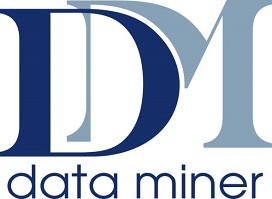About this course
The aim of this course is to provide to the learner with the knowledge to work with more advanced topics of Microsoft Power Automate (previously known as Microsoft Flow). The course will emphasise hands-on experience, with a series of self-guided exercises integrated into the training.
The learner will discover how to create more complex flows to automate and manage business processes.
Prerequisites
Before attending this course, learners should have:
- A general knowledge of using Office 365
- Some experience of basic SharePoint administration
- Attended QA’s Power Automate Essentials course, or have equivalent knowledge
- Some additional experience creating flows
- Some knowledge of JSON would also be useful, but is not essential
Please Note: If you attend a course and do not meet the prerequisites you may be asked to leave.
Delegates will learn how to
Delegates will learn how to:
- Work with variables, conditions, and loops
- Work with functions and expressions
- Use Adaptive Cards to enhance the user experience
- Enhance the build-in approval process
- Use the SharePoint REST API for advanced SharePoint tasks
- Integrate Power Automate flows with Power Apps
- Apply Power Automate design best practices
- Handle flow run-time errors
- Utilise Parent – Child flows
- Use the Microsoft Graph API with Power Automate
Outline
Module 1 – Power Automate Essentials
- What you should already know
- Working with dynamic content and expressions
- Referencing trigger information
- Referencing action information
- Lab 01 – Preparation tasks
Module 2 – Variables, Conditions and Loops
- Variables
- Conditions
- Loops
- Lab 02 – Conditions and loops
Module 3 – Functions and Expressions
- Reasons to use expressions
- Anatomy of a function
- Basic and advanced expressions
- Where can expressions be used
- Expression editor
- Functions
- Expressions or actions
- Lab 03 – Functions
Module 4 – Working with Adaptive Cards
- Why use Adaptive Cards
- Adaptive Cards designer
- Using an Adaptive Card
- Lab 04 – Adaptive Cards
Module 5 – Advanced control properties and OData
- OData
- Common advanced settings
- Advanced trigger settings
- Advanced action settings
- Lab 05 – Advanced properties
Module 6 – Advanced Approvals
- Approval options
- Custom responses
- Approval limitations
- Adding reminders to approvals
- State pattern
- Lab 06 – Advanced approvals
Module 7 – Using the SharePoint HTTP action
- Making an HTTP request to SharePoint
- Lab 07 – SharePoint HTTP action
Module 8 – Integration with Power Apps
- The flow
- Calling the flow from Power Apps
- Capturing returned data
- Lab 08 – Working with Power Apps
Module 9 – Best practices and handling errors
- Documentation
- Optimising flows
- Keep flow configurations generic
- Handling errors
- Lab 09 – Handling errors
Module 10 – Parent and child flows
- Parent / Child flows general principal
- HTTP Method
- Using a Solution
- Lab 10a – Child flows: HTTP action
- Lab 10b – Child flows: solutions
Module 11 – Using the Microsoft Graph API
- Steps to use the Microsoft Graph API
- Lab 11 – Using the Microsoft Graph API
| Pradžios data | Trukmė, d. | Kurso pavadinimas | Kaina, € |
| Užklausti | 3 | Mastering Microsoft Power Automate | 1200 |
| Užklausti | 1 | Microsoft Power Apps Essentials | 800 |
| Užklausti | 3 | Mastering Power Apps | 2400 |

